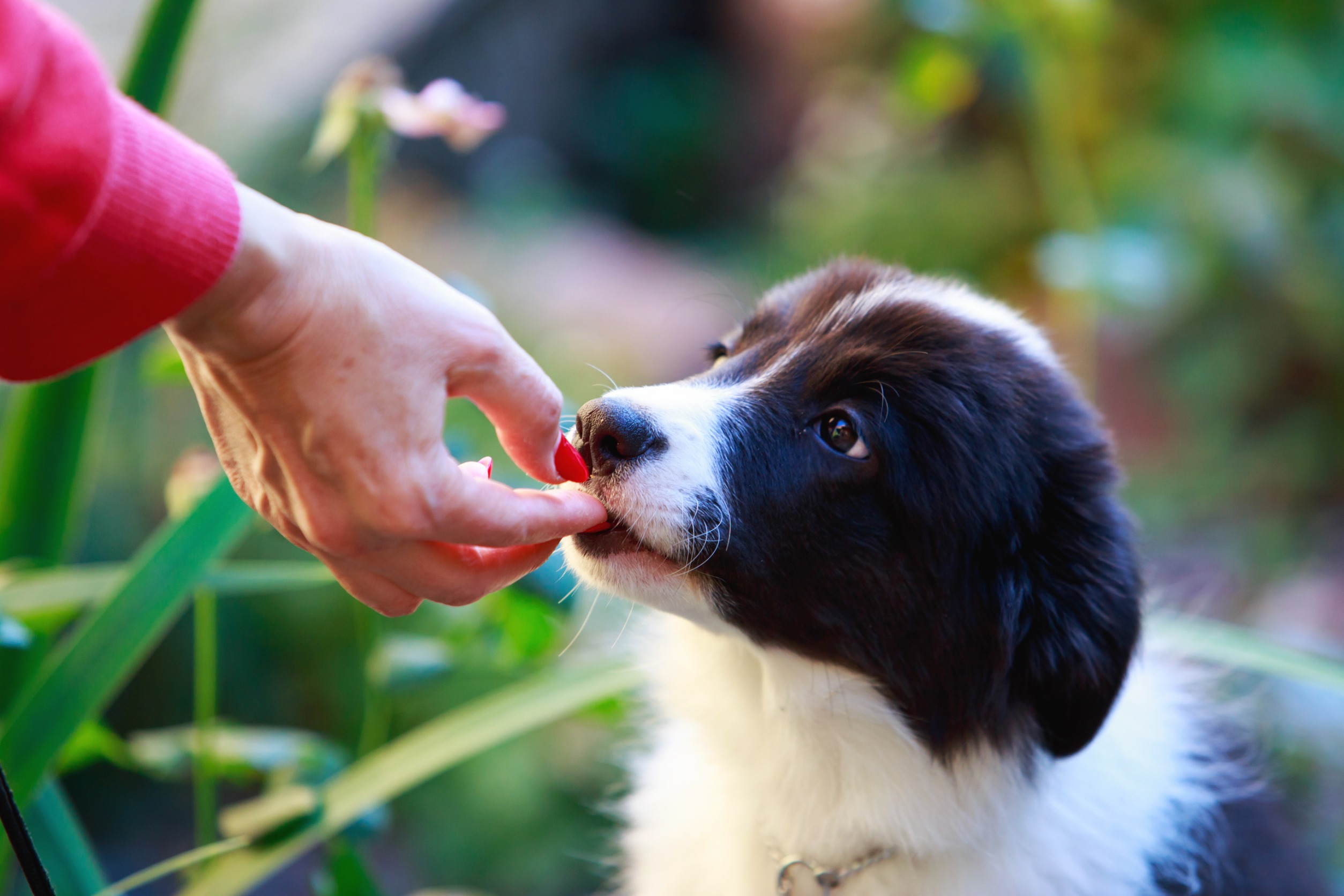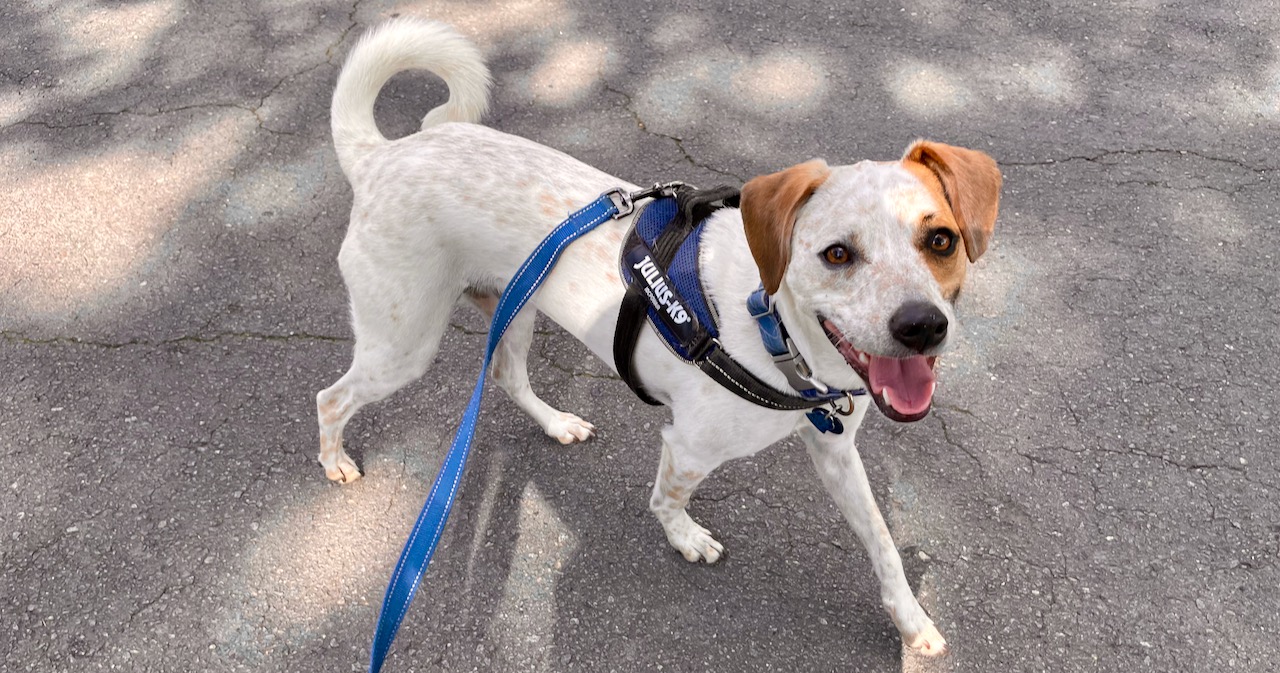When can you start giving puppies treats? What types of dog treats are best to start with? Find out the answer to these questions and more in our guide!
Every pet owner wants to spoil their puppies. It’s a natural feeling when looking at your adorable puppy eyes and faces. Naturally, this feeling makes you wonder when can you start giving puppies treats.
But you won’t have to wonder too much longer; I’ll answer this question and discuss other relevant topics within this article. So read on, and I’ll make sure introducing your puppy to the world of treats goes off without a hitch!
What Age Can Puppies Start Eating Treats?
Pet parents will want to provide treats as soon as possible. However, most experts recommend waiting until a puppy is eight weeks old before introducing treats. It’s the only way to ensure your pup won’t have issues digesting them.
For instance, eight weeks is when their digestion system has matured enough to where they can start processing traditional food. In other words, they don’t have to rely solely on puppy formula or their mother’s milk.
Some health issues could arise when introducing treats before this 8-week mark. It’ll likely result in upset stomachs or allergic reactions, which isn’t ideal. The products could even cause a blockage that puts their digestive system in jeopardy.
It’s a much better idea to wait for the 8-week mark, even though it can be agonizing. After all, who doesn’t want to spoil their new puppy with a ton of treats? I’ll teach you how to do it properly in the next section!
How to Introduce Treats to Your Puppy
Once your puppy reaches the 8-week mark, the treat-giving can begin. But there’s a process to follow, or some issues can occur. So please follow these tips to ensure your pup’s introduction to treats goes swimmingly!

1. Take a Slow Approach
It’s never a good idea to start anything with your dog too quickly. Instead, owners should be patient to prevent their dogs from becoming stressed or anxious. A slow approach will also help the digestion system adjust and identify potential allergies.
As a result, a single-ingredient treat is the best option for puppies. It’ll ensure owners can pinpoint what’s causing any issues if they do occur. You can then adjust your chosen treats based on these interactions.
So don’t give your puppy more than one treat at a time. It’ll help minimize the damage if a problem does present itself.
2. Don’t Take Your Eyes Off Your Puppy
It’s vital to keep an eye on your puppy when feeding them their first treat. It’s a simple way to observe how their bodies handle something new. Look for concerning symptoms like fatigue, scratching, elevated thirst, or peculiar bathroom experiences.
If any concerns do arise, stop giving your puppy the treats. They should improve, but a vet visit needs to take place. Otherwise, you won’t figure out what ingredient is causing the issue.
3. Don’t Take Any Changes Lightly
Changing treats may not seem like a big deal, but it can cause issues. So if you plan on offering new ones, do it gradually. Start the entire introduction process over again and see how they react to it.
In other words, don’t assume the new treats will go over smoothly. It’ll take time for your puppy to adjust as it did with their old ones.
4. Don’t Become Reliant on Treats
Treats aren’t supposed to be a massive part of your puppy’s diet. You should only provide them in moderation as a reward or a persuasive tool to encourage good behaviors. If your puppy becomes over-reliant on them, they could become indifferent to their regular food.
Benefits of Using Puppy Treats
Several beneficial results will come from providing your puppy with treats. You’d be surprised by how much positive impact the proper treats can have on a canine’s life. So let’s highlight these advantages to showcase what you can expect when first spicing up your puppy’s diet!
1. Excellent Tool for Training
Training never becomes more important for a dog than in the puppy stage. Early training and socialization can pay massive dividends in ingraining proper behavior. In other words, it’s easier to correct problems early rather than changing them when your dog’s an adult.
Nothing makes these training sessions more successful than utilizing treats. Basically, owners should use them as a positive reinforcement reward. It’ll help your puppy associate getting one with doing a command, such as sitting.
Over time, this association will ingrain the command into their mind. It’ll soon become second nature to them and won’t require a treat if done correctly. I’ve used this technique to teach numerous basic commands like sit, stay, or even lay down.
But treats aren’t only effective when training dogs to do basic commands. This positive reinforcement technique can also help with the more challenging tasks. I’ve even used them to help my beagle understand an agility course, which I didn’t think was possible.
2. Improves Dental Health
Your puppy’s teeth will still be developing when the treat-using process starts. So try to find treats that can promote better and improve dental health. In other words, you don’t want to use an option like animal crackers that’ll get stuck on their teeth and gums.
But this issue won’t be a problem with treats knowing for encouraging better dental health. These options reduce build-ups, limit tartar/plaque, and promote more effective saliva production. So they become a helpful tool in stimulating healthier teeth and gums.
3. Establishes a Bond
Establishing a bond with your puppy is necessary during this early development stage. Treats are an excellent avenue for cultivating trust that results in a healthy owner/pet relationship. After all, any puppy is more prone to trusting a human who gives them a tasty treat.
But remember, refrain from being over-reliant on treats to create this bond. Doing so may result in long-term obesity or a reluctance to eat regular food. I’d recommend using treats with other trust-building techniques like petting or play sessions.
4. Helps Comfort Your Puppy in Stressful Situations
Puppies aren’t known for healthily handling stressful situations. But giving them a treat or two can help calm and distract them from the issue. For instance, giving a puppy treats when left alone at home can reduce the likelihood of them being overwhelmed.
This technique does wonders, especially when keeping your puppy in a crate. The confines of their enclosures will calm them down, while the treats will prevent boredom. I’d recommend hiding them in a Kong or similar toy to ensure the treats last longer.
More importantly, it’ll create a positive association with being left alone. It’ll eventually become much less stressful for them and prevent the formulation of separation anxiety. Trust me; separation anxiety isn’t fun for an owner or dog to experience.
5. Easier to Give Puppies Medication
Giving medication to dogs can be an absolute nightmare for owners. You’d think it’d be easier with puppies, but some canines are born picky eaters. So you’ll have to figure out ways to trick them into taking their medicine.
Here’s an area where treats can be a godsend for owners. You can hide their medication inside your puppy’s preferred treat (or make your own using Pill Paste) and wait for them to eat it. In most cases, this experiment will go swimmingly and become your primary way of giving them pills.
What To Look For In Puppy Treats
Choosing the right puppy treats is an art form. In fact, several key factors need consideration to ensure you make the proper selection. But don’t worry; I’ll walk you through them below to prevent confusion.

1. Nutritional Value
Your puppy won’t benefit a single second from being given an unhealthy treat. It’s crucial to choose treats based on their provided nutritional value. Honestly, you want the most nutritious and beneficial option possible rather than focusing solely on its taste.
The goal is to choose a puppy treat that can be incorporated into their diets easily. It shouldn’t be an option full of artificial ingredients and sugar. Instead, these “treats” should contain significant lean protein and healthy fats.
It’s another reason owners would be wise to check the ingredients list. From there, discuss with your vet if a specific treat would be beneficial. They’ll provide insight into whether their incorporation could bring up issues or only offer benefits.
More importantly, they’ll provide recommendations for healthy treats. Never overlook how impactful a discussion with a vet can be for your dog, especially during the puppy stage. It’s the easiest way to ensure they develop healthily.
2. Treat Size
Size is an overlooked component of choosing a suitable puppy treat. But there’s no reason an 8-week-old puppy needs an adult dog-sized treat. It doesn’t make any sense and could cause health complications such as choking.
You’d be much better off selecting a treat made for puppies. It’s not like there’s a shortage of available options, either. The pet food marketplace is filled with food and treats made specifically for our growing little pups.
Another option would be breaking down adult treats into smaller, bite-size pieces. It could be a more affordable choice for a multi-dog household. I’ve certainly done it when fostering puppies and didn’t have the time to pick up puppy-specific options.
3. Taste
Your puppy won’t eat their treat if they don’t enjoy the taste. It’s common sense, but you’d be surprised by the number of manufactured treats that dogs seem to hate. So I’d suggest testing out what tastes your puppy responds to the most before choosing a treat.
It’ll make selecting a suitable option easier. Furthermore, it’ll make them much more effective than results from any old milk bones.
4. Chewiness
Puppy treats need to be shorter than what you’d get for adult dogs. Your pup’s teeth are still developing, so those harder/tougher options could fracture teeth or cut into their gums. So stick with ones that have a softer design to encourage easier digestion and chewing.
Your puppy’s teeth will end up being much stronger for it. The last thing an owner wants is for their pup to chip their tooth during this stage or pick up an infection in their gums.
Conclusion
The eight-week mark is your guideline for when puppies can start enjoying treats. But remember, only use them in a way that’s beneficial for your growing pups, such as a training reward or bonding tool. You also want to ensure your chosen treats are top-tier and suitable for puppy use.
If you have any more questions or concerns, leave them in the comment section. I’d love to hear any puppy treat recommendations that have made your puppy’s life easier, as well. Thanks for reading!




